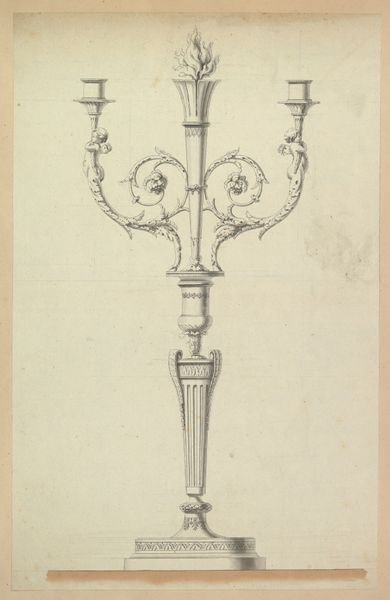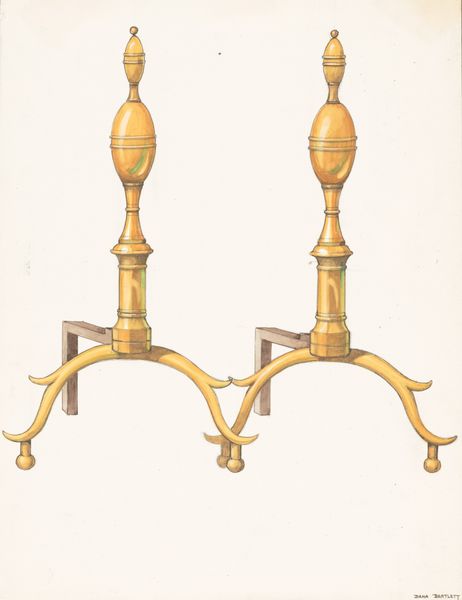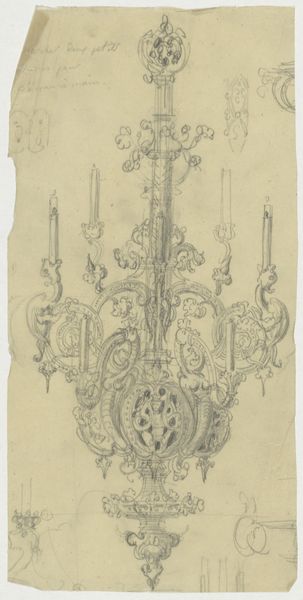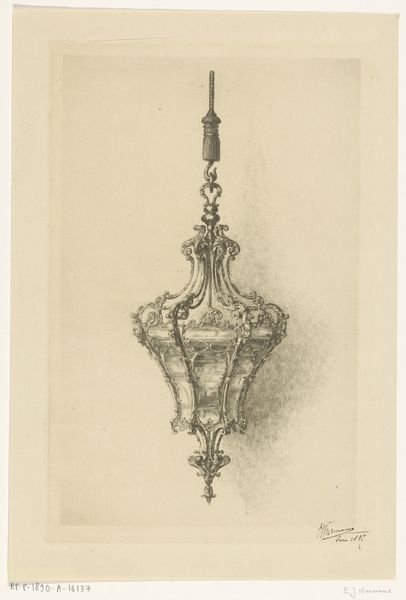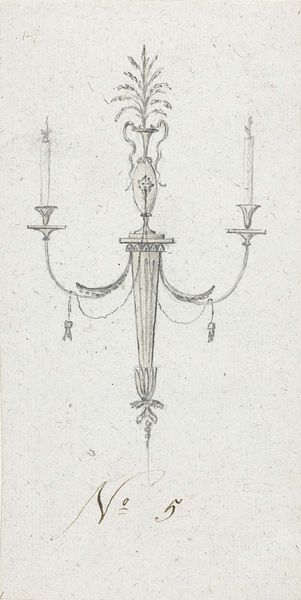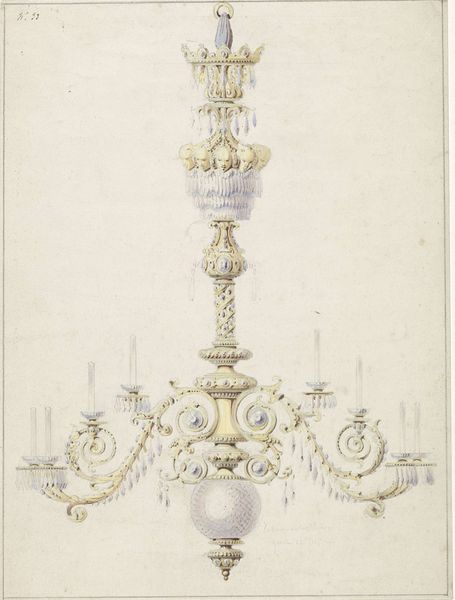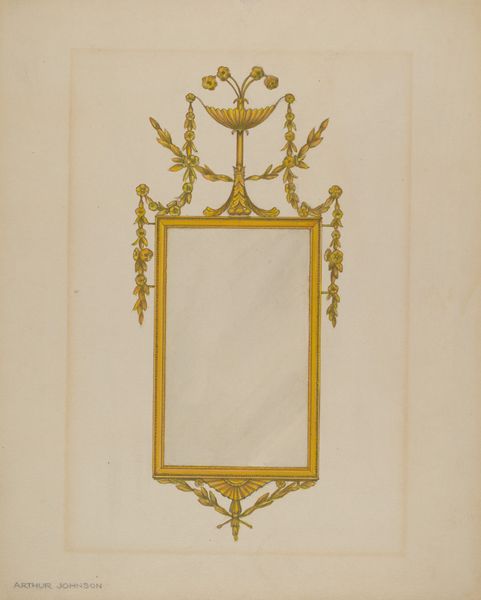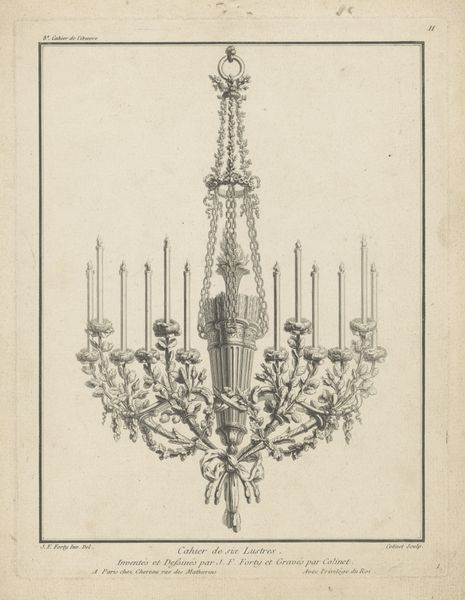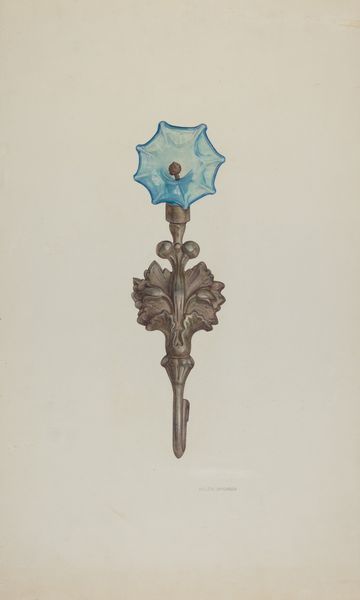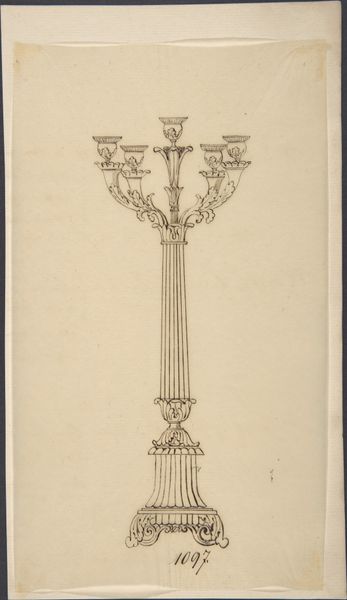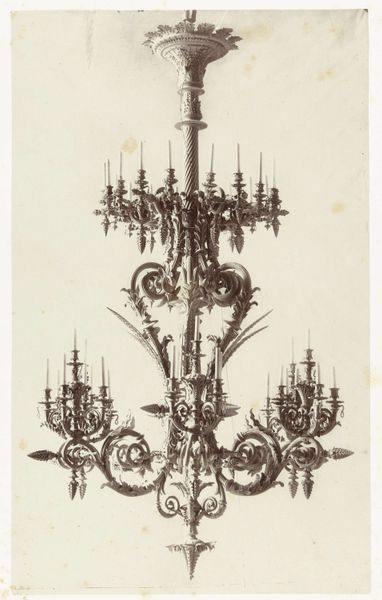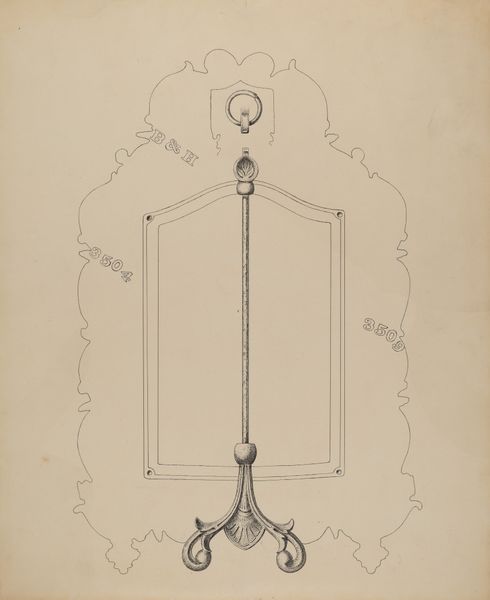
drawing, print, paper, ink, pencil
#
drawing
# print
#
arts-&-crafts-movement
#
paper
#
form
#
ink
#
pencil
#
line
#
decorative-art
Dimensions: sheet: 16 x 7 3/16 in. (40.7 x 18.3 cm)
Copyright: Public Domain
Curator: Looking at this delicate ink and pencil drawing on paper, one can’t help but appreciate its elegant simplicity. It’s B. Mansfield’s "Design for Church Lamp Stand," created in 1889. Editor: My first thought is "spare." There's a real emphasis on line, isn't there? It’s interesting how such a potentially ornate object is rendered with this almost diagrammatic restraint. Curator: Exactly. Mansfield’s rendering reflects the broader Arts and Crafts movement rejecting mass production for handcrafted, aesthetically driven designs. One can imagine the emphasis placed on the metalwork—its malleability and potential for intricate detailing. Editor: Absolutely. Considering the late 19th century’s societal shift— the rise of industrial manufacturing clashing with the desire for individual artistry — makes me think about the role of craft within religious institutions. Was this design meant to elevate the worship experience, or did it reflect a wider aesthetic shift happening within church communities? Curator: It likely represents a desire for reform and return to simpler values and authentic construction. The lamp stand itself would become a symbol beyond its utilitarian purpose—a tangible representation of those beliefs. The means of producing such an object, the artisanal labour, was central. Editor: The design reflects those very production values. It appears almost modular in its conception, a sort of functional beauty born out of readily worked materials, rather than being overly elaborate. Given its location now in the Metropolitan Museum of Art, does this design act as a preserved history—a testament to art, society, and a period of reevaluation in what role art plays? Curator: Without a doubt, showcasing craft like this elevated its status and contributed to a market where individual designers and studios gained recognition, fostering that conscious production we keep discussing. Editor: The image feels like an invitation, urging us to look beyond form to comprehend an aesthetic rooted in ethics. It makes you wonder how the social values of production influenced not just its design, but its ultimate place in history. Curator: Precisely; a testament to a brief cultural moment of intentional artmaking. Editor: And that, perhaps, allows the work to transcend its religious function and reflect something much broader.
Comments
No comments
Be the first to comment and join the conversation on the ultimate creative platform.
